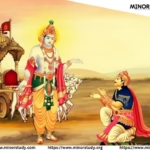🐍 7 Powerful Truths About Naag Panchami That Will Amaze You
Naag Panchami is one of the most ancient, revered, and symbolic festivals of Hindu tradition that beautifully blends mythology, devotion, nature-worship, and social values. Celebrated with heartfelt devotion and colorful rituals across India and Nepal, Naag Panchami is observed on the fifth day (Panchami) of the Shukla Paksha in the month of Shravan (July-August), when devotees worship serpents (Naags) with prayers, milk offerings, and songs.
- 📜 History of Naag Panchami
- 🧠 Amazing Facts About Naag Panchami
- 📅 Timeline & Evolution of Naag Panchami
- 🔍 Frequently Asked Questions (FAQs)
- 🌟 Significance in Life & Society
- 🌿 Spiritual Significance:
- 🧬 Scientific & Ecological Relevance:
- 🤝 Social & Cultural Impact:
- 🎭 Artistic Influence:
- 💫 How Naag Panchami Affects Daily Life
- 🙏 Wishing on Naag Panchami
- 📌 Important Points to Remember
- 🧘♀️ Conclusion: Why Naag Panchami Still Matters
Despite the fear snakes invoke in most people, this festival flips that emotion into reverence and gratitude, reflecting the Indian ethos of respecting all living beings—even those that are feared.

📜 History of Naag Panchami
The origins of Naag Panchami are rooted in Vedic scriptures and Puranic legends. Snakes have always been an integral part of Hindu cosmology. From being adornments of Lord Shiva (Vasuki around his neck) to guardians of wealth and the netherworld (Patala), their symbolism is deep.
Key Mythological Associations:
Mahabharata Legend: According to the epic, Janamejaya, the son of King Parikshit, started a great Sarpa Satra (snake sacrifice) to avenge his father’s death caused by snake bite (Takshaka). The sacrifice was stopped by the sage Astika, who was half-Brahmin and half-Naga. This day—Panchami—was then commemorated as Naag Panchami to celebrate the truce and honor the lives of serpents.
Lord Krishna and Kaliya Naag: As a child, Krishna subdued the poisonous multi-hooded serpent Kaliya in the Yamuna River, symbolizing victory of good over evil. Villagers then began worshiping snakes to commemorate this day.
🧠 Amazing Facts About Naag Panchami
Pan-Indian Presence: Naag Panchami is observed differently in different states—like Maharashtra, Karnataka, Uttar Pradesh, Bengal, and Gujarat—but the essence remains the same: honoring snakes as divine beings.
Worship of Live Snakes: In rural areas, snake charmers bring live cobras in baskets for worship, and people offer them milk, incense, and sweets.
No Ploughing of Land: In agricultural societies, it’s believed that digging the earth on this day can harm snakes. So, farmers refrain from ploughing as a sign of respect.
Snake Paintings on Walls: In places like Bihar and Madhya Pradesh, people draw snake symbols on their walls using cow dung and natural colors, invoking protection for their households.
Naag Temples: Special temples are dedicated to serpent deities such as Mansa Devi, Naga Devata, and Subrahmanya Swami, where huge crowds gather on Naag Panchami.
Connection to Ecology: The festival indirectly promotes snake conservation, as devotees are taught to protect rather than harm these essential reptiles.
Scientific Insight: Snakes are vital to ecosystems—they control rodent populations and maintain ecological balance.
📅 Timeline & Evolution of Naag Panchami
| Era/Period | Significance |
|---|---|
| Vedic Age | Serpents mentioned in Rigveda; worship of nature beings starts. |
| Mahabharata Era | Astika saves the snake race, leading to Naag Panchami observance. |
| Gupta Period (4th century CE) | Naag cults become more prominent in Hindu and Jain art. |
| Medieval Era | Devotional practices of Mansa Devi emerge in Bengal. |
| Modern India | Snake worship continues alongside calls for wildlife protection and coexistence. |

🔍 Frequently Asked Questions (FAQs)
Q1: Why is Naag Panchami celebrated?
Naag Panchami is celebrated to worship serpents as divine protectors, acknowledge their role in nature, and seek protection from snake bites and other calamities.
Q2: What is the significance of offering milk to snakes?
Though snakes don’t drink milk naturally, the offering is symbolic—it’s a gesture of reverence, similar to how offerings are made to deities during pujas.
Q3: Is it safe to worship live snakes?
In many rural traditions, snake charmers handle cobras that have often been defanged, which is now discouraged due to animal welfare concerns. Worship can be symbolic using images or idols.
Q4: Are there specific mantras for Naag Panchami?
Yes. One popular mantra is:
“Om Kurukulle Hoom Hreem Swaha Naag Devataaye Namah” – chanted to seek protection and blessings of the serpent gods.
Q5: What should not be done on Naag Panchami?
Avoid digging, ploughing, or disturbing the soil. Also, refrain from harming any reptile, and maintain peaceful, sattvic living on this day.
🌟 Significance in Life & Society
🌿 Spiritual Significance:
Snakes are symbolic of kundalini energy, a form of dormant spiritual energy coiled at the base of the spine in yogic tradition.
Worshipping snakes is like honoring the powerful energies within oneself.
🧬 Scientific & Ecological Relevance:
Promotes coexistence with wildlife.
Educates people on the role of snakes in balancing agricultural ecosystems.
🤝 Social & Cultural Impact:
Encourages community bonding through fairs, rituals, and folk songs.
Enhances cultural literacy and keeps mythology alive among children and younger generations.
🎭 Artistic Influence:
Naag Panchami has inspired countless folk songs, dances, films, and paintings across India, keeping traditions alive.

💫 How Naag Panchami Affects Daily Life
Promotes Awareness: Many people learn about snakes, their importance, and snakebite precautions because of the festival.
Cultivates Compassion: Instead of fearing or killing snakes, people develop respectful attitudes toward them.
Boosts Rural Economy: Snake charmers and idol sellers see increased income around this festival.
Encourages Natural Harmony: Reinforces India’s ancient worldview that humans and animals must coexist peacefully.
🙏 Wishing on Naag Panchami
Here are some meaningful wishes you can share:
“May the blessings of Naag Devta protect your home and bring prosperity this Naag Panchami.”
“Wishing you and your family a safe, sacred, and serene Naag Panchami.”
“On this Naag Panchami, may the divine energy awaken your inner strength and wisdom.”
📌 Important Points to Remember
Date (2025): Naag Panchami will be celebrated on August 3, 2025.
Fasting: Many observe vrat (fast) on this day, consuming only fruits and milk.
Offerings: Milk, turmeric, durva grass, sandalwood, and flowers are offered to snake idols or burrows.
Temples to Visit:
Mannarasala Temple (Kerala)
Nagoba Temple (Maharashtra)
Subrahmanya Swamy Temple (Karnataka)

🧘♀️ Conclusion: Why Naag Panchami Still Matters
Naag Panchami is not just a religious event; it is a spiritual reminder and environmental lesson wrapped in tradition. It teaches us:
To respect all life forms—even those we fear.
To live in harmony with nature.
To appreciate ancient wisdom encoded in rituals and symbols.
In today’s fast-paced urban life, where nature often takes a back seat, festivals like Naag Panchami reconnect us to our roots, land, and universal life energy.
Let this Naag Panchami inspire you to live with gratitude, respect, and balance.
📝 Call to Action:
If you found this article valuable, share it with your loved ones and take a moment this Naag Panchami to light a diya and say a small prayer for all beings—seen and unseen.








